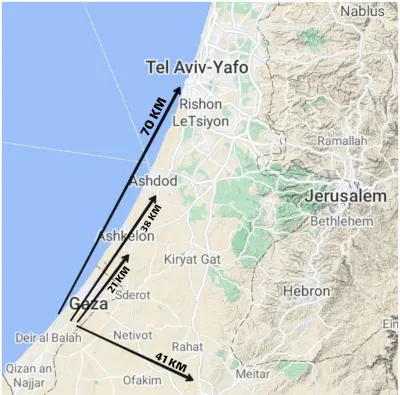Construction Materials Prices in Palestine
Palestine theoretically includes the West Bank (a territory that sits between modern-day Israel and Jordan) and the Gaza Strip (which borders modern-day Israel and Egypt). Building materials are used in the construction and production of various structures. Citrus fruits, strawberries, and flowers are the most important exports of the Gaza Strip. Construction sand, typically sourced from rivers, quarries, or coastal areas, is a fundamental component of concrete, mortar, and other construction materials. Israeli occupation in Palestinian territories, the barrier it has constructed along and within the West Bank as well as its land, air and sea blockades in the Gaza strip have placed severe limitations on the success of Palestinian economic policies. Gypsum plaster is commonly applied as a smooth and durable finish for interior walls and ceilings
Add your import and export orders to this list
Warning: Undefined variable $formTitle in /home/anbar/domains/anbar.asia/anbar/inc/html/desktop/orderform.php on line 10
Warning: Undefined variable $marketName in /home/anbar/domains/anbar.asia/anbar/inc/html/desktop/orderform.php on line 12
Warning: Undefined variable $location in /home/anbar/domains/anbar.asia/anbar/inc/html/desktop/orderform.php on line 12
If you want to trade in the , please join in Anbar Asia. Your order will be shown here, so the traders of contact you

There are the number of 4.1 million Palestinians, and more than 1.2 million Palestinians in the Gaza Strip. Palestine is as an old state in the Middle East. The construction industry is one of the most prosperous industries and businesses in the Middle East. If you are arriving in Gaza, it's important to note that Gaza is a part of the Palestinian territories. Soil is a combination of excellent minerals and minerals created by weathering and rock destruction
- Palestine Concrete blocks Market
- Palestine paint Market
- Palestine Glass Market
- Palestine wood and timber Market
- Palestine Ceramic Tile Market
- Palestine Brick Market
- Palestine Sand Market
- Palestine lime Market
- Palestine Cement Market
- Palestine Plaster Market
- Palestine Clay Market

Its economic growth is about 6 percent, which seems appropriate for a war-torn country. Of course, a large volume of this GDP and growth is related to the western territories of Palestine, and the Gaza Strip has less of a role in these figures. The Gaza Strip industry is often made up of family businesses that produce textiles, soap, olive wood carvings, and pearl oyster souvenirs.
Read More ...
Sand is produced by crushing rocks. Coarse stones are produced from the crushing and separation of natural stones, and finer sands, in addition to stones, also contain shells and corals. In civil engineering, aggregates smaller than 75 mm and coarser than 4.75 are called sand. Sands are divided into two categories according to the source and type of grains used in construction.
Read More ...Trends in productivity improvement in construction projects in Palestine . * Department of Civil Engineering, IUG, PALESTINE ** Fachgebiet Bauwirtschaft und Baubetrieb, Technische Universitaet Berlin, GERMANY *** PECDAR, Gaza, PALESTINE. Out of the 3,900 factories in Gaza producing food, construction materials, wood, paper, craftwork, engineering materials, metals, plastics and rubber, more than 2,900 factories have ceased to produce. In Palestine like several other countries, productivity in construction industry still suffers from lack of accurate measurements and effective strategies to enhance construction productivity. (2006), The Gaza Economy" Palestine Center Information, Brief No. The lessons learnt under this approach are being reviewed and considered by mayors of other major cities in the West Bank such as Nablus and Ramallah/Al Bireh. Dozens of trucks carrying construction materials were allowed to enter the Gaza Strip on Tuesday after Israel eased a long-standing blockade it tightened even further in the wake of an 11-day assault on the Palestinian enclave in May. A Villa in Ramallah. The development of planned cities such as Beersheba, attention to and works, and the construction of the Hijaz railways and clock towers are some manifestations of those Ottoman policies in Palestine. Soon after their conquest of Palestine, the British authorities issued a Town Planning Ordinance (1921) that created Palestine planning institutions and their respective powers. This explains for instance the compulsory use of stones in several regions of Mandate Palestine. In major cities and towns, such as Ramallah, al-Bireh, Bethlehem, and Beit Jala, new construction reflected contemporary urban architecture forms rather than traditional peasant architecture. These relatively smooth to the built environment in Palestine ended abruptly with the cataclysmic event in 1948 that is referred to by Palestinians as the Nakba, during which more than 400 Palestinian towns and villages were depopulated. In the decades that followed, successive Israeli master plans were designed to dominate and expropriate the land mass of Palestine that became Israel and reflected total disregard for the spatial, social, and economic needs of the Palestinians who remained. In the part of Palestine that came to be known as the Gaza Strip, the post-1948 influx of 250,000 refugees increased the indigenous population of over 70,000 by more than 300 percent. Jerusalem, Nablus, Ramallah, and al-Bireh (and even some villages that were rapidly expanding as towns) were among the urban centers whose architecture had a distinctly modern flavor, as can be seen in the public and private buildings and institutions constructed during this and post office buildings, universities, hospitals, public parks, banks, hotels, cinema theatres, and some family houses. Huge investments have been made in real estate and the construction of suburbs, gated communities, shopping centers, and the first “planned city” (Rawabi, located between Ramallah and Birzeit). ” Journal of Palestine Studies 19, no. ” Journal of Palestine Studies 5, nos. Reclaiming Space: The 50 Village Project in Rural Palestine. Ramallah, Palestine: Riwaq, 2015. Washington, DC: Institute for Palestine Studies, 1992. The Timeline is authored by the Institute for Palestine Studies as part of a joint project with the Palestinian Museum.
Read More ...
https://unhabitat.org/palestine-housing-and-slum-upgrading-2
https://www.scielo.cl/scielo.php?script=sci_arttext&pid=S0718-50732013000200005&lng=en&tlng=en

